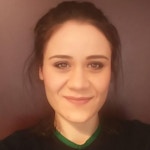From Design to Experiment
Proposed Design Procedures for Full-scale Structural Testing of Flat Cable-net Facades
Presented on August 5, 2020 at Facade Tectonics 2024 World Congress
Sign in and Register
Create an Account
Overview
Abstract
Flat cable-net facades are form-active structures which provide maximum transparency by means of point fixing components, tensioned cables, and structural glass units. In contemporary structural design methods, computational non-linear analysis is usually in use. Nevertheless, integrating full-scale experimental procedures into computational structural design process might be essential due to non-predictable structural behavior of form-active cable-nets especially under dynamic loads such as wind forces. In this respect, this paper focuses on determining a specific method to designate full-scale experimental steps for flat cable-net facades under wind loads. Design steps for such full-scale testing are performed mainly in four phases; full-scale test scenario, architectural, and structural design, construction steps of test stand are prepared in accordance with the related standards (BS-EN12179, BS-EN12153, BS-EN12155). Architectural design process contains conceptual drawings, application, and manufacturing detailing processes. The proposed cable-net facade is designed as 5,136 m x 8,812 m consisting of 20 insulated glass units (IGUs), Ф14 mm diameter steel cables, anchors, point fixings, sealants, and a closed steel frame which is a secondary structure that enables to integrate cable-net structure to the existing concrete test stand of the testing facility located near Istanbul. After a detailed architectural design phase, structural design is performed for all structural components in 3D. The cable-net structure is designed following the Allowable Stress Design (ASD), ASCE19-16, ASCE/AISC360-10, and ASCE7-10 procedures. Consequently, design steps prior to a full-scale experimental testing of a flat cable-net facade are determined and relationships between architectural and structural designs are clarified to guide future experimental studies. This study reveals that both architectural and structural designs of cable net facades should be well integrated throughout the design phases of experimental setup to carry out well-organized construction and test process respectively. A road-map containing all steps is proposed to achieve this goal.
Authors

E. Yagdir CELIKER, MSc.
Research Assistant
Istanbul Bilgi University
yagdir.celiker@bilgi.edu.tr

Oguz C. CELIK, PhD.
Professor of Structural&Earthquake Engineering
Istanbul Tecnical University
celikoguz@itu.edu.tr
Keywords
Introduction
Flat cable-net facades are form-active and the most dematerialized structures including insulated structural glass units (IGUs), pre-stressed steel wire ropes, anchors, and sealants. With dematerialization, maximum transparency and lightweightness ratios
Access Restricted
Background
This part focuses on international codes, standards, and previous studies about cable-net facade design and full-scale testing procedures. To determine cable-nets’ structural behavior, nonlinear structural analyses have to be executed
Access Restricted
Method
This study aims to perform all design steps of full-scale testing procedures to comprehend relationships among designing, constructing, and testing of such facades. Thus, an optimized design and testing procedure
Access Restricted
Architectural Design of Flat Cable-net Facade
Architectural design process begins with system sketch of the facade. This sketch contains initial ideas about form, modulations, dimensions, and preliminary equations about nonlinear calculations. The first decisions also comprise
Access Restricted
Structural Design of Flat Cable-net Facade
Flat cable-net glass facades include mainly three interdependent structural subsystems/components: cable-net, secondary steel structure, and connection components. All these systems are to be analyzed with distinctive design characteristics. Therefore, structural
Access Restricted
Planning Construction Steps of Proposed Flat Cable-net Facade
Planning construction steps of cable-net test stand is a substantial phase to gain concrete results of experimental studies. Cable-net facade has mainly two construction phases: construction of secondary steel frame
Access Restricted
Summary and Evaluations
According to the analyses results, the maximum reaction force is 43,29kN (less than strength design limits of the Ф14 mm cables (59,95kN) at the pin connection located in the middle
Access Restricted
Conclusions and Future Work
The following conclusions can be drawn from this work:
Analyzing the structural and dimensional properties of existing test stand, determining climatic conditions, and specifying full scale test scenario are the keyAccess Restricted
Acknowledgements
This research was partly supported by ITU Scientific Research Projects Unit under contract number ITU BAP-9278 (2016-2018). Selami Gurel, Bülent Ozgul, and Ilknur Akın of Metal Yapi, Turkey, Murat Seyhan of FTI (Facade Testing Institute, Turkey), and Emrah Erenler of Charl Stahl, Turkey have provided significant help during the architectural and structural design phases of the proposed test setup and experimental procedures. However, any opinions, findings, conclusions, and recommendations presented in this work are those of the authors and do not necessarily reflect the views of the sponsors or people.
Rights and Permissions
American Institute of Steel Construction. 2010. “ASCE/AISC 360-10 Specification for Structural Steel Buildings.”
American Institute of Steel Construction. 2016. “ASCE/AISC 303-16 Code of Standard Practice for Steel Buildings and Bridges.”
American Society of Civil Engineers. 2013. ASCE 7-10. American Society of Civil Engineers, Minimum Design Loads for Buildings and Other Structures (ASCE 7-10). Vol. 552. https://doi.org/http://dx.doi.... Society of Civil Engineers. 2016. “ASCE 19-16 Structural Applications of Steel Cables for Buildings.”
Abbas Aminmansour Will Sheppird.2001. ‘‘Innovative Curtain Wall System Requires Integration of Architecture and Structural Design.’’ ACSA Technology 2001. Austin Texsas.
British Standards Institution. 2000. BS-EN 12153 Curtain Walling Air Permeability Test. London: BSI.
British Standards Institution. 2000. BS-EN 12155 Curtain Walling-Watertightness-Laboratory Test under Static Pressure. London: BSI.
British Standards Institution. 2000. BS-EN 12179 Curtain Walling-Resistance to Wind Load-Test Method. London: BSI.
British Standards Institution. 2015. BS EN 13830 Curtain Walling-Product Standard. London: BSI.
Bogazici University Kandilli Observatory and Earthquake Research Institute. 2008. Istanbul High Rise Buildings Regulation.
British Standards Institution. 2005. Eurocode 3: design of steel structures. London: BSI.
Celiker, E. Yagdir. 2018. “Cable-Net Facades with Novel Glass Nodes: Development, Design, and Testing.” Graduate Science School, Istanbul Technical University.
CSI, “SAP2000 Integrated Software for Structural Analysis and Design” Computers and Structures Inc., Berkeley, California.
Charl Stahl. 2018. “Stainless Steel Wire Rope System.” Accessed June 24, 2019. http://www.carlstahl.com.tr/ur... T. Yalaz, Aslihan Tavil, and Oguz C. Celik. 2018 "Lifetime Performance Evaluation of Stick and Panel Curtain Wall Systems by Full-Scale Testing", Construction & Building Materials, Elsevier, Vol. 170, pp. 254-27.
German Institute for Standardization. 2013. “DIN18008-3 Glas Im Bauwesen Bemessungs Und Konstrukttionsregeln.”
Greco, Leopoldo, Nicola Impollonia, and Massimo Cuomo. 2014. “A Procedure for the Static Analysis of Cable Structures
Following Elastic Catenary Theory To Cite This Version: HAL Id: Hal-00954208.”
Mepla, “SJ Mepla, Software for Structural Glass Design” Mepla Glass Software Inc., Wurselen, Germany.
Li Ming, Wang Bin, Wang Liguo, and Wang Yuanqing. 2015. “Analysis on Prestress Application for Cable Net Supported Curtain Wall.” In International Conference on Mechatronics, Electronic, Industrial and Control Engineering Analysis (MEIC), 607–10.
Patterson, Mic. 2011. Structural glass facades and enclosures. John Wiley & Sons, 2011.
Fabio Rizzo. 2016. “Tensile Structures of Cables Net, Guidelines to Design and Applications.” Open Journal of Civil Engineering 6 (March): 254–85. https://doi.org/http://dx.doi.org/10.4236/ojce.2016.62023.
https://doi.org/10.1007/s11920... Standards Institute. 2003. “TS 498 Design Loads for Buildings.”
Turkish State Meteorological Service. n.d. “Official Statistics of Cities of Turkey.” Accessed June 25, 2019. https://mgm.gov.tr/veridegerlendirme/il-ve-ilceler-istatistik.aspx?m=ISTANBUL.
Ugwu, O. O., C. J. Anumba, and A. Thorpe. 2004. “The Development of Cognitive Models for Constructability Assessment in Steel Frame Structures.” Advances in Engineering Software 35 (3–4):191–203. https://doi.org/10.1016/j.adve... Winkler, Christos T.Georgakis, Gregor Fischer. 2015. ‘'Fretting Fatigue Behavior of High-Strength Steel Monostrands under Bending Load'’, International Journal of Fatigue, vol. 70, pp. 13-23. https://doi.org/10.1016/j.ijfatigue.2014.08.009.
Yuanqing, Wang, Zongyi Wang, Kang Xu, and Yongjiu Shi. 2018. “Experimental and Numerical Studies on the Static and the Dynamic Behaviors of Embedded Cable Support (ECS) Glass Facade System.” Engineering Structures 178.
Yussof, Mustafasanie. 2015. “Cable-Net Supported Glass Facade Systems.” University of Surrey.